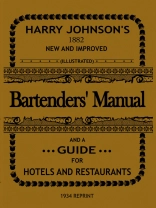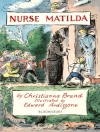First published in the 1860s, Harry Johnson’s ‘Bartenders’ Manual’ is part of the classic bar-books and one of its oldest exemplar. The author has been one of the first bartenders who not only had general and wise thoughts about his profession, he also commited his experiences and opinions to paper and wrote a teaching book for beginners and professionals. Doing this, he layed the foundation for following generations and stands beside Jerry Thomas at the beginning of a long list of famous bartenders.
In his book Harry Johnson carries the reader into times where it was obviously necessary to remind bartenders not to chew on a toothpick or a cigar when on a job interview, not to spit on the floor or pursue other bad habits. He gives advise how to conduct a bar as well as how to treat employees and guests, how to handle beer-casks and wine-bottles, what stock is needed in a bar or restaurant, how to keep the business books and much more. The second half of the book contains recipes for cocktails, punches, bowls and other drinks famous in USA and Europe during this time. There you can also find the presumably first mention of the Martini cocktail as well as instruction of how to mix absinth and chill champagne.
The Bartenders’ Manual is not only a window to the past, it also shows how professional some bartenders of that time pursued their business — a fact we almost forget or ignore as we connect the USA of the 19. century with dusty saloons and dirty beer-glasses. Some parts of the book may seem out of date (who is still using blocks of ice or keeps guspidors for his guests?) but it is still a must-have for professionals and enthusiastic hobby-barkeepers and gives precious insights of the beginning of bar-culture.
Об авторе
Harry Johnson wurde am 28.08.1845 in Königsberg in Ostpreußen geboren und wanderte sieben Jahre später mit seiner Familie nach San Francisco aus. Dort fing er schon mit 15 an in verschiedenen Saloons und Hotels zu arbeiten und begann damit seine Karriere in der Gastronomie. Später eröffnete er selbst eigene Lokale in Chicago und an der Ostküste der USA und verfasste eines der ersten Fachbücher für Barkeeper. Sein ‘Bartenders’ Manual’ gilt als Klassiker der Barliteratur und wurde nach der Wende zum 21. Jahrhundert von der aufblühenden Barszene neu entdeckt.












